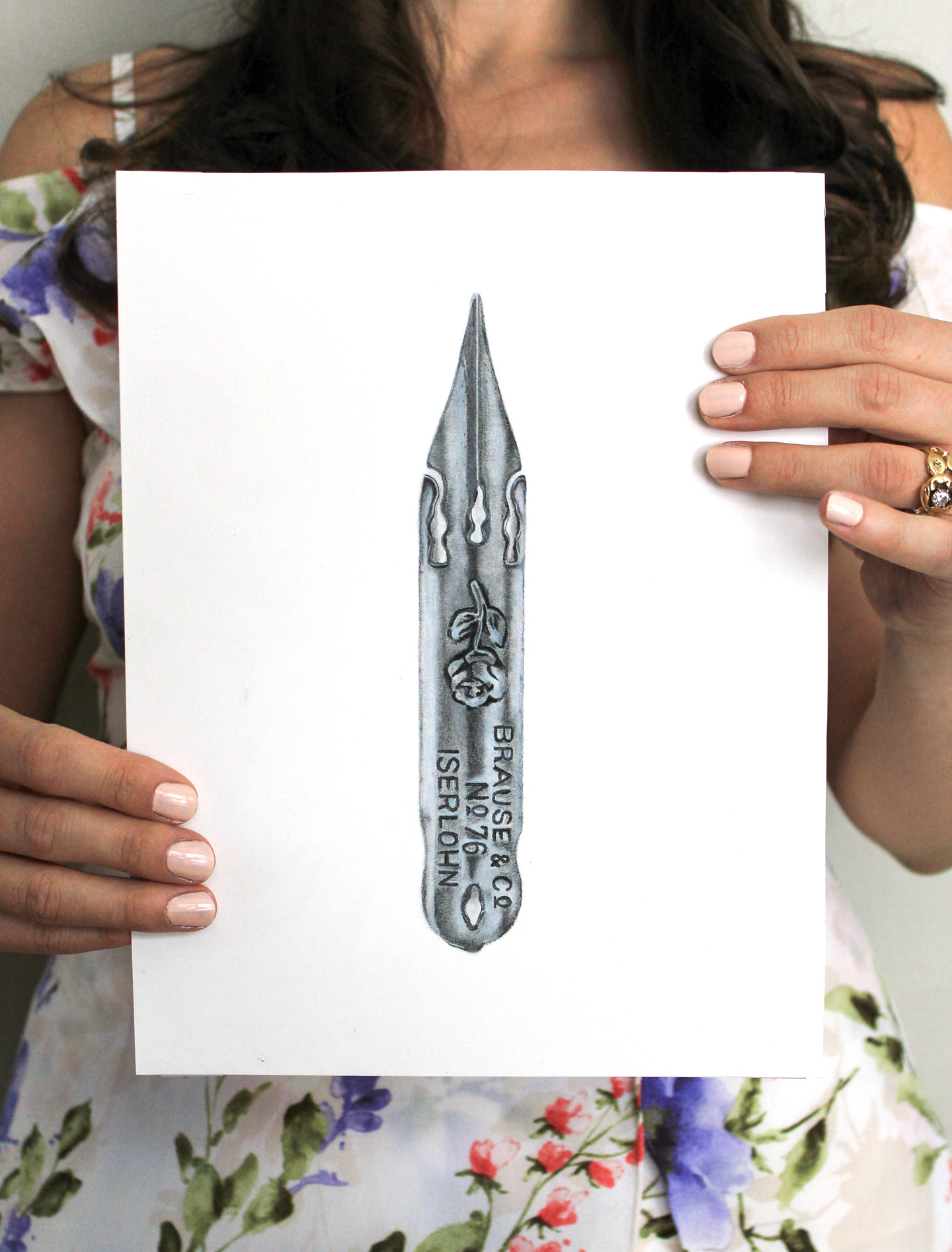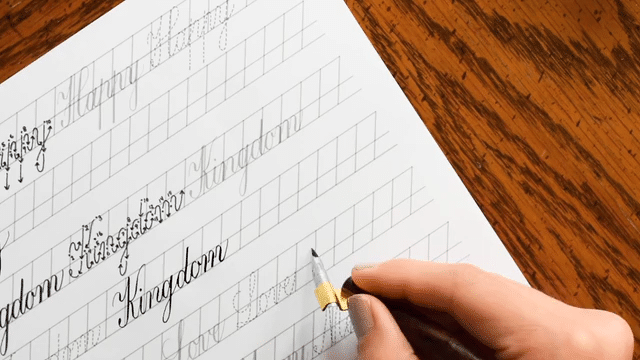
A few weeks ago, I received an email from Brittany at Tombow. She is a reader of this blog who recently started working at Tombow {and is loving it — so many art supplies!}, and she was kind enough to ask if I would want to try some of the company’s art products. I never say no to art supplies, so she sent me over a sample pack. It was very thoughtfully packaged, and its contents were absolute gold. While I loved everything she sent, I especially loved the brush pens. Once I got the hang of them, I knew I had to write a brush pen tutorial!

First of all, a brush pen is a marker that has a very tapered, brush-like end {without any bristles}. The appeal of the brush pen is the fact that the width of the stroke line changes with pressure. See the lines below? All of them were created with the same brush pen; but different degrees of pressure were applied to create each line. Very little pressure was used to create the line on the left, while the line on the right was made with full pressure.

Since pressure is very much a part of calligraphy, brush pens and calligraphy go hand in hand {or marker in hand, as the case may be}. I filmed a short video to show you how I make calligraphy with a brush pen:
{Click here to watch this video on Vimeo … sometimes the videos don’t show up if you’re reading this post from your smartphone.}
Like with dip pen calligraphy, brush pen calligraphy relies on changes in pressure to create strokes of different widths. These different widths lead to eye-catching contrast. The only hitch with brush pen calligraphy is you do need to write your words relatively large in order to enjoy the full effect of that contrast.

If you’re just beginning to learn calligraphy, the brush pen makes for a great introduction to using different levels of pressure. An understanding of these different levels of pressure could result in an easier transition into dip pen calligraphy. Another nice thing about brush pens is you don’t need a high-quality paper to practice; printer paper works just fine.
I thought I’d give each of my calligraphy styles a try using the brush pen, just to see how each one fares:
1. The Kaitlin:

2. The Janet:

3. The Beth:

4. The Flourish Formal:

I was surprised at how good the calligraphy ended up looking — particularly the Janet and the Flourish Formal, which I think really shine when created with a brush pen!
In addition to making simple calligraphy, you can play around with some effects to add some oomph. You saw the effect below in Creative Hand Lettering Tutorials Part I. To create it, I wrote “friday” in Kaitlin style calligraphy, then I used a dip pen and walnut ink to draw small, thin lines that function as shadows.

For the colorful piece below, I used Janet style calligraphy to write “Great!” in blue; then I supplemented my downstrokes with a stroke of yellow.

If you’re not in a scripty, flowy mood, you can always just write in print. The contrast between thick and thin makes this “OKAY” stand out.

While my favorite thing to do with brush pens is write in calligraphy, I appreciate their versatility with other applications. Frankly, the Tombow brush pens blow your run-of-the-mill, Crayola-type markers out of the water when it comes to illustration. I was thinking that they’d be really great for travel. I mean, yes, I am a huge fan of watercolors {big surprise there}, but there are times that you can’t lug your whole watercolor get-up around. So, I thought I’d show you how I would use these on a trip.
If you’re on a trip, consider taking out your pen and sketching your surroundings. When you draw a place from “real life” {not a photo}, you are truly noticing what’s around you. You see things you wouldn’t normally have noted, and that focus makes for sharper memories. You really don’t need to be a pro at drawing using perspective; just draw exactly what you see. It doesn’t need to be perfect — nay, it shouldn’t be perfect!

Once you use a pen or marker to make a sketch, you can use a brush pen to fill it in just as you would with a brush. However, you’ll find the hassle is less than it is with watercolor, and the color is pleasantly vivid.

I haven’t mentioned this yet, but the Tombow brush pens come with a different-sized tip on each end. One end is the brush, and the other end is a regular, fine-tipped marker. You can use the marker to draw smaller details.

The markers blend together well, which is a feature I appreciate. As you can see, I drew dots of red on the roofs to represent shingles, then I went over the red with a light brown. This kind of blending would permanently alter the color of a lot of markers, but for whatever reason, the Tombow brush pens self-heal. I really like that because I’m big on blending.

It’s rewarding to make travel sketches anyway; but the brush pens give pieces a striking, vivid color without a mess. I enjoyed experimenting with the brush pens to create this drawing!

I hope this brush pen tutorial sheds some light on using an art supply you may not have thought about using before! I can think of a lot of things I would {and will} use brush pens on: posters, envelopes, bookmarks, decorative artwork, and probably more.

Do you have any questions about using brush pens? Or, are you a seasoned user who has tips that I haven’t discovered yet? I would love to hear from you in the comments, and I’m sure others would benefit from your question/knowledge as well!
Thanks so very much for reading, and have a great weekend!
Warmly,





















